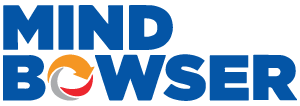Medicare’s chronic care management (CCM) and the new advanced primary care management (APCM) programs provide hospitals and medical groups with a recurring revenue stream tied to improved patient outcomes. In 2025, CMS shifted from minute tracking to monthly bundled payments. For CIOs, CTOs, and CFOs, the question is not whether to implement CCM, but how to integrate it into EHR workflows, capture audit artifacts, and prove ROI.
When we first integrated chronic care management into a mid-market health system’s EHR, the drivers were clear: rising readmission penalties, stagnant fee-for-service rates, and a need to demonstrate progress in value-based care without disrupting existing operations. CCM offered a Medicare-approved path to do exactly that.
Fast forward to 2025, and Medicare’s new APCM model has raised the stakes. Instead of counting 20 minutes a month per patient, practices can now receive a fixed monthly payment for delivering comprehensive care management. That simplifies operations but demands stronger proof—clear documentation, interoperable care plans, and airtight audit logs.
From a product perspective, CCM and APCM are not billing codes alone. They are data workflows. The design questions are:
In this blog, I’ll walk through the Medicare landscape, coding mechanics, EHR integration blueprint, and operating playbooks we’ve implemented with clients like TodayHealth and Alera. I’ll also share how accelerators such as CarePlan AI and HealthConnect CoPilot reduce build time and protect against denials.
Chronic Care Management (CCM) is Medicare’s program that reimburses providers for managing patients with two or more chronic conditions. In 2025, CMS added Advanced Primary Care Management (APCM), which bundles services into a fixed monthly payment rather than requiring minute tracking. The aim is to make care management simpler for practices while tying payments more closely to patient complexity.
Eligibility is straightforward: patients must have multiple chronic conditions expected to last at least 12 months and place them at significant risk of death, acute exacerbation, or functional decline. Consent is critical. CMS requires explicit patient consent—either written or verbal—that is documented in the medical record. We have seen health systems boost enrollment by scripting this conversation directly into EHR workflows, ensuring compliance and reducing denials.
CCM is one piece of a broader Medicare care management ecosystem. Principal Care Management (PCM) focuses on patients with a single, complex condition. Transitional Care Management (TCM) addresses the first 30 days post-discharge. Remote Patient Monitoring (RPM) encompasses the capture of daily physiologic data. These programs cannot overlap for the same time period, which means CIOs and CMIOs must design eligibility checks into their systems. Clients that integrated CCM with RPM workflows saw 90% engagement among elderly users and doubled the speed of reporting.
Bottom line: CCM and APCM are no longer optional pilots. They are structured Medicare programs designed to generate recurring revenue while encouraging hospitals to focus on measurable outcomes. Getting the eligibility, consent, and coordination right is the first step to making these models work at scale.
Related read: Medicare Chronic Care Management in 2025: A CTO’s Playbook
Medicare’s CCM program uses a set of CPT codes tied to the complexity of the patient and the time required:
Each code has specific documentation requirements. From our builds, the most common denial triggers are missing time logs or incomplete care plan updates. Embedding time-tracking directly into EHR tasking eliminates the need for manual reconciliation.
In 2025, CMS introduced Advanced Primary Care Management (APCM). Instead of logging 20-minute increments, providers receive a fixed monthly payment if they meet core service requirements such as care planning, medication reconciliation, and patient communication. APCM is designed to reduce administrative friction, but it shifts compliance risk toward audit artifacts. The rate is higher than the standard CCM, making APCM attractive to CFOs who model recurring revenue.
For Federally Qualified Health Centers (FQHCs) and Rural Health Clinics (RHCs), APCM replaced the older G0511 code. These sites now receive payment aligned with APCM requirements, which simplifies billing but demands updates to workflows and staff training. Telehealth encounters remain eligible as long as all CCM criteria are met.
CMS is explicit. Providers must retain:
One client reduced denials by 35% after creating an “audit pack” that bundled all required artifacts into a single, automatically generated PDF from Epic. This type of design move protects revenue and accelerates month-end reconciliation.
Related read: Mastering Complex CCM (99487/99489): Documentation, ROI, and Audit Readiness
Every CCM and APCM workflow eventually touches claims. That means data must flow cleanly from care delivery to billing. The building blocks in FHIR include:
When we mapped CCM in Epic, we tied tasks in the nurse’s in-basket to FHIR Task objects, which flowed downstream to Claims. This removed manual reconciliation and cut documentation time by 22% for one client.
No two EHRs surface CCM data in the same way. In Epic, flowsheets are the best anchor for care plan progress. In Cerner, PowerForms and CareCompass tasks carry the burden. Meditech requires custom NPR reports for audit artifacts. Athena and Healthie offer lighter APIs that can be extended through SMART on FHIR apps. Canvas supports direct API writes into longitudinal patient charts.
The rise of APCM means every care plan must also capture social risk factors. We have seen success in encoding transportation needs, housing insecurity, and food access into Observation resources tagged with LOINC codes. This not only meets HEDIS quality reporting requirements but also supports value-based care contracting.
By mid-2025, TEFCA will expand national exchange through QHINs. That matters because CCM care plans need to be portable across providers. When a patient changes PCPs, the CarePlan object must follow. Designing for FHIR-native export today ensures compliance tomorrow.
Automate eligibility, consent, and audit workflows to scale Medicare reimbursements with confidence.
The first challenge is getting eligible patients to say yes. Medicare requires documented consent. We’ve seen health systems raise enrollment from 12% to 38% of eligible patients simply by scripting the CCM conversation into their scheduling workflows. Automated eligibility lists pulled from claims history help front-office staff know who to approach.
CCM is not just a phone call. CMS requires a documented care plan that includes goals, interventions, and follow-up plans. Our CarePlan AI accelerator has proven useful here, generating goal libraries that nurses can tailor in under three minutes. Monthly touches can include phone, portal, or video visits as long as they are logged.
Ratios matter. In our builds, one RN can manage about 120 active CCM patients when supported by an LPN or MA. Without task automation, that number drops below 80. Healthcare providers who integrated HealthConnect CoPilot into their EHR tasking scaled faster because routine work, such as medication reconciliation reminders, flowed directly into nurses’ inboxes.
Traditional CCM codes require logging time. APCM simplifies this with a monthly bundle. The operational risk shifts from timekeeping to ensuring required activities are completed and documented. We solved this by embedding monthly checklists into EHR workflows, giving teams a simple “APCM complete” indicator.
CCM is most defensible when tied to outcomes. One client saw a 21% drop in readmissions within 90 days of enrollment after layering CCM with RPMCheck AI to triage device signals. Linking care plans to measurable outcomes makes the case to both Medicare auditors and hospital CFOs.
CCM and APCM revenue depends on three levers: panel size, enrollment rate, and reimbursement per patient per month. A 10,000-patient panel with 20% enrollment can generate over $1.2 million annually under APCM, provided documentation is airtight.
Costs fall into four buckets: staffing, technology, physician oversight, and outreach. Staffing typically accounts for 60% of program expense. Platforms and integration add 20%, though accelerators like CarePlan AI reduce that by automating care plan generation.
Most clients reach breakeven by month six if enrollment exceeds 20% of eligible patients. For one client pilot reached cash-positive in under five months after automating consent tracking and integrating audit packs into their Epic build.
Related read: CCM Billing 2025: Codes, APCM & ROI
Every CCM and APCM program lives under HIPAA and SOC 2 requirements. Data at rest must be encrypted, and audit logs must capture every user interaction with patient data. For behavioral health conditions, 42 CFR Part 2 imposes stricter consent requirements, which entail additional safeguards regarding data sharing. In practice, this requires role-based access in the EHR and audit trails that can be exported on demand.
CMS mandates clear patient consent for CCM and APCM, and patients must be able to revoke it at any time. Our builds include consent artifacts that are versioned and stored with the care plan. Documentation must be retained for at least six years in line with Medicare audit requirements. Alera avoided recoupments by packaging patient consent, time logs, and care plan versions into a single retention folder, which was automatically created by the EHR each month.
Medicare Administrative Contractors (MACs) sometimes interpret requirements differently. A code that passes in Region J may be denied in Region H. This variation makes internal audits essential. We recommend sampling 5% of claims each month and validating them against MAC-specific guidance before final submission. Clients who implemented this safeguard cut denial rates by nearly a third.
The best defense is a proactive audit rhythm. Monthly audits review the completeness of care plans, time and activity logs, and communication records. Quarterly audits stress-test consent revocation and opt-out workflows. We have built dashboards that flag gaps in real time, reducing downstream surprises during a CMS audit.
Related read: Chronic Care Management Software: Building Compliance-Ready, ROI-Driven Platforms for 2025 and Beyond
One of the slowest steps in CCM enrollment is intake. Nurses spend 15–20 minutes reconciling problems, meds, and history. AI Medical Summary compresses this to under two minutes by pulling data from CCDAs and encounter notes. That speed means more patients enrolled per nurse per day.
CMS requires a care plan for every CCM or APCM patient. Writing goals and interventions from scratch takes time. CarePlan AI offers structured goal libraries—such as hypertension, diabetes, and CHF—that a nurse can personalize with just a few clicks.
RPM feeds are noisy. RPMCheck AI triages device signals and flags only clinically relevant alerts. WearConnect streamlines device onboarding, enabling patients to start transmitting data within 48 hours. Together, these accelerators keep nurse workloads manageable and make CCM more defensible during audits by showing consistent data review.
The strongest ROI case for CCM is reduced readmissions. AI Readmission Risk embeds predictive scores into monthly touch workflows, prompting proactive outreach and care.
Every CIO or CTO we work with asks the same three questions: Will this integrate with my EHR? Will it withstand an audit? and will it pay back within 12 months? That frames the evaluation. Security, clinical usability, and integration depth must all be scored before procurement.
Too many vendors still rely on HL7 file drops or manual uploads. Our stance is clear: CCM must be API-first. Event streams, FHIR subscriptions, and secure queues are the plumbing that allow care plans, tasks, and consent artifacts to move seamlessly. This maintains audit data integrity while reducing staff workload.
CCM and APCM are recurring revenue streams. Your contract should mirror that reality. We recommend outcome-tied milestones—such as hitting a 20% enrollment rate within 90 days—backed by SLAs that guarantee system uptime and integration support. This approach aligns vendor incentives with hospital outcomes.
Speed matters. We have delivered CCM builds in 90 days by phasing rollout:
Each wave includes KPI gates that measure enrollment growth, task closure rates, and claim acceptance rates.
Even the best platform fails without adoption. Nurses need job aids, managers need dashboards, and physicians need reassurance that care planning will not cut into their schedules. For one client, we conducted four nurse enablement sessions that reduced enrollment objections by half. Pairing tech with structured change management is the difference between success and shelfware.
At Mindbowser, we do not drop in generic modules. We design CCM and APCM builds that are HIPAA and SOC 2 compliant by design, integrate cleanly with Epic, Cerner, Meditech, Athena, or Canvas, and deliver an audit artifact kit that meets CMS standards. Our accelerator bundle—AI Medical Summary, CarePlan AI, HealthConnect CoPilot, RPMCheck AI, and WearConnect—shortens delivery by 40%.
Every build ships with HIPAA, SOC 2, and 42 CFR Part 2 safeguards. That means role-based access, audit trails, and data retention artifacts are in place from the very beginning. CIOs and compliance officers can walk into an audit with confidence.
We align with your ROI model. That means targeting a 20% enrollment lift in the first quarter, a measurable reduction in documentation time, and a trackable drop in denials. Hospitals that partner with us consistently see breakeven in six months and recurring revenue in the seven-figure range.

Hospitals cannot afford to treat Medicare’s CCM and APCM programs as side pilots. With physician fee schedules under pressure and value-based contracts expanding, these programs represent reliable recurring revenue backed by measurable patient outcomes. The leaders who move now will capture both financial upside and strategic positioning for future care models.
Patients with two or more chronic conditions expected to last at least 12 months and place them at risk of functional decline or hospitalization qualify. For APCM, the provider must deliver a set of monthly care management activities to bill the bundled payment.
Medicare Part B applies coinsurance, which typically means patients pay 20% of the cost after the deductible is met. Practices should use clear consent scripts that explain both the clinical and financial aspects of the procedure. Many patients accept when benefits are clearly tied to reduced hospital visits.
Providers must retain care plans, patient consent, time or activity logs, and communication records. For APCM, a checklist of monthly required activities must be completed. Audit packs that auto-generate from the EHR are the most reliable defense against errors.
Yes, CCM and RPM can be billed for the same patient if requirements are met and documentation is distinct. For example, CCM covers care coordination while RPM covers device-based physiologic monitoring. The services must not double-count time or activities.
APCM replaces minute-tracking with a fixed monthly payment tied to required activities. For RHCs and FQHCs, it replaces code G0511. This reduces administrative burden but increases compliance risk, as auditors will check for completed activities rather than time logs.

We worked with Mindbowser on a design sprint, and their team did an awesome job. They really helped us shape the look and feel of our web app and gave us a clean, thoughtful design that our build team could...


The team at Mindbowser was highly professional, patient, and collaborative throughout our engagement. They struck the right balance between offering guidance and taking direction, which made the development process smooth. Although our project wasn’t related to healthcare, we clearly benefited...

Founder, Texas Ranch Security

Mindbowser played a crucial role in helping us bring everything together into a unified, cohesive product. Their commitment to industry-standard coding practices made an enormous difference, allowing developers to seamlessly transition in and out of the project without any confusion....

CEO, MarketsAI

I'm thrilled to be partnering with Mindbowser on our journey with TravelRite. The collaboration has been exceptional, and I’m truly grateful for the dedication and expertise the team has brought to the development process. Their commitment to our mission is...

Founder & CEO, TravelRite

The Mindbowser team's professionalism consistently impressed me. Their commitment to quality shone through in every aspect of the project. They truly went the extra mile, ensuring they understood our needs perfectly and were always willing to invest the time to...

CTO, New Day Therapeutics

I collaborated with Mindbowser for several years on a complex SaaS platform project. They took over a partially completed project and successfully transformed it into a fully functional and robust platform. Throughout the entire process, the quality of their work...

President, E.B. Carlson

Mindbowser and team are professional, talented and very responsive. They got us through a challenging situation with our IOT product successfully. They will be our go to dev team going forward.

Founder, Cascada

Amazing team to work with. Very responsive and very skilled in both front and backend engineering. Looking forward to our next project together.

Co-Founder, Emerge

The team is great to work with. Very professional, on task, and efficient.

Founder, PeriopMD

I can not express enough how pleased we are with the whole team. From the first call and meeting, they took our vision and ran with it. Communication was easy and everyone was flexible to our schedule. I’m excited to...

Founder, Seeke

We had very close go live timeline and Mindbowser team got us live a month before.

CEO, BuyNow WorldWide

Mindbowser brought in a team of skilled developers who were easy to work with and deeply committed to the project. If you're looking for reliable, high-quality development support, I’d absolutely recommend them.

Founder, Teach Reach

Mindbowser built both iOS and Android apps for Mindworks, that have stood the test of time. 5 years later they still function quite beautifully. Their team always met their objectives and I'm very happy with the end result. Thank you!

Founder, Mindworks

Mindbowser has delivered a much better quality product than our previous tech vendors. Our product is stable and passed Well Architected Framework Review from AWS.

CEO, PurpleAnt

I am happy to share that we got USD 10k in cloud credits courtesy of our friends at Mindbowser. Thank you Pravin and Ayush, this means a lot to us.

CTO, Shortlist

Mindbowser is one of the reasons that our app is successful. These guys have been a great team.

Founder & CEO, MangoMirror

Kudos for all your hard work and diligence on the Telehealth platform project. You made it possible.

CEO, ThriveHealth

Mindbowser helped us build an awesome iOS app to bring balance to people’s lives.

CEO, SMILINGMIND

They were a very responsive team! Extremely easy to communicate and work with!

Founder & CEO, TotTech

We’ve had very little-to-no hiccups at all—it’s been a really pleasurable experience.

Co-Founder, TEAM8s

Mindbowser was very helpful with explaining the development process and started quickly on the project.

Executive Director of Product Development, Innovation Lab

The greatest benefit we got from Mindbowser is the expertise. Their team has developed apps in all different industries with all types of social proofs.

Co-Founder, Vesica

Mindbowser is professional, efficient and thorough.

Consultant, XPRIZE

Very committed, they create beautiful apps and are very benevolent. They have brilliant Ideas.

Founder, S.T.A.R.S of Wellness

Mindbowser was great; they listened to us a lot and helped us hone in on the actual idea of the app. They had put together fantastic wireframes for us.

Co-Founder, Flat Earth

Mindbowser was incredibly responsive and understood exactly what I needed. They matched me with the perfect team member who not only grasped my vision but executed it flawlessly. The entire experience felt collaborative, efficient, and truly aligned with my goals.

Founder, Child Life On Call

The team from Mindbowser stayed on task, asked the right questions, and completed the required tasks in a timely fashion! Strong work team!

CEO, SDOH2Health LLC

Mindbowser was easy to work with and hit the ground running, immediately feeling like part of our team.

CEO, Stealth Startup

Mindbowser was an excellent partner in developing my fitness app. They were patient, attentive, & understood my business needs. The end product exceeded my expectations. Thrilled to share it globally.

Owner, Phalanx

Mindbowser's expertise in tech, process & mobile development made them our choice for our app. The team was dedicated to the process & delivered high-quality features on time. They also gave valuable industry advice. Highly recommend them for app development...

Co-Founder, Fox&Fork
